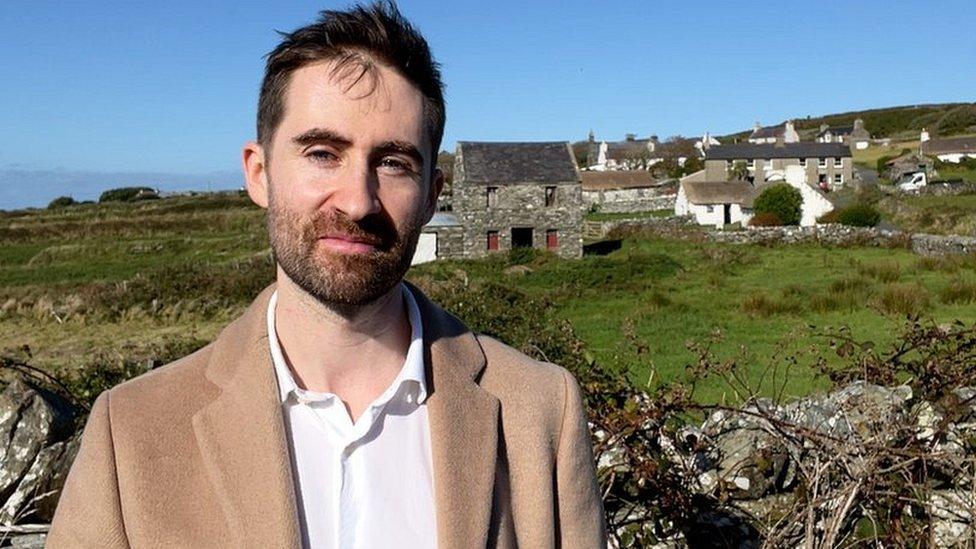Manx language added to Google Translate

It is estimated there are 2,200 speakers of Manx on the Isle of Man
- Published
The native language of the Isle of Man has become more widely accessible around the world, after it was added to Google Translate.
Manx, a Celtic language credited with surviving the threat of extinction, is one of 110 languages newly added to the service using Artificial Intelligence (AI).
Fisherman Ned Maddrell, who died in 1974, is touted as the last native speaker of Manx, but a subsequent revival has led to 69 schoolchildren currently being taught in the language at the native-speaking school, Bunscoill Ghaelgagh.
Breesha Maddrell, a director of Culture Vannin, called the launch of Manx on Google Translate an "exciting step", but warned it may not be totally accurate.
'Large reach'
It is estimated there are 2,200 speakers of Manx on the Isle of Man, including more than 1,000 children who are taught the language in school, with proposals to see that figure double by 2032.
Dr Maddrell said the Manx Language Research Group had worked to disseminate more of the Manx language online, which had allowed Google's AI technology to collate it for translation purposes.
However, she has advised people not to rely on the service for accuracy, suggesting users of Google Translate check any phrases against Culture Vannin's own translation service.
"You can go into Google Translate at the moment and get good some phrases of Manx - and you can get some phrases that aren't accurate," said Dr Maddrell
"It would be dreadful if people tattooed something wrongly on their arm, or spent a lot of money putting it on a plaque or in a document," she added.
Despite its diminutive size, Dr Maddrell said there was interest all over the world in the Isle of Man and its language, noting a recent New York Times' feature on the revival of Manx.
"We're a small nation - and we've got this really large reach," she said, thanking volunteers and the island's government for their support.
Why not follow BBC Isle of Man on Facebook, external and X, external? You can also send story ideas to IsleofMan@bbc.co.uk, external
Manx translation of the article's first four paragraphs, by Google Translate:
Ta çhengey dooghyssagh Ellan Vannin er jeet dy ve ny smoo ry-gheddyn er feie ny cruinney, lurg da ve currit stiagh ayns Google Translate.
Ta'n Manninagh, çhengey Celtiagh ta currit er cree dy vel ee er surranse y baggyrt dy gholl ersooyl, nane jeh 110 çhengaghyn noa currit stiagh 'sy çhirveish liorish ymmyd jeh Çhengey Artificial (AI).
Ta'n eeastagh Ned Maddrell, hooar baase 'sy vlein 1974, er ny hoiaghey magh myr loayreyder dooghyssagh s'jerree ny Mannin, agh ta aavioghey lurg shen er chur da 69 oikanyn scoill goll er ynsaghey 'sy çhengey ec y traa t'ayn ec y scoill dooghyssagh Bunscoill Ghaelgagh.
Ren Breesha Maddrell, stiureyder Cultoor Vannin, enmyssey cur magh Manninagh er Google Translate myr "keim scanshoil", agh hug ee raad foddee nagh bee eh slane kiart.
- Published24 June 2024
- Published21 October 2022

- Published27 June 2022
